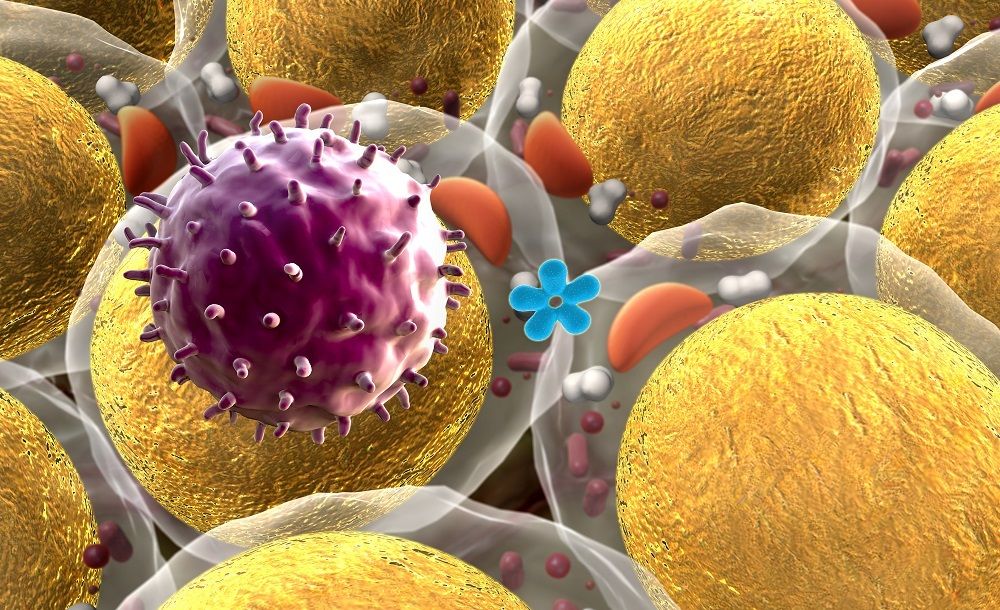Cancer fighting nanovaccines have shown significant promise, but clinical application has been hampered by complications in large-scale manufacturing, quality control, and safety. Biomedical engineers at the National Institute of Biomedical Imaging and Bioengineering (NIBIB) developed a new technology that enables nanovaccines to bind to the albumin protein naturally present in the body. The albumin protein then delivers these nanocomplexes to the lymph nodes, resulting in potent immune activation against multiple tumor types in mouse cancer models. The use of natural albumin as a universal vaccine shuttle is a significant step towards the application of cancer nanovaccine immunotherapy in humans.
Nanovaccines that work to mount an immune response against a tumor basically consist of two components: the part that delivers the vaccine to the correct site, the lymph nodes, where immune system activation happens; and the part that activates the immune cells to expand and specifically target the tumor.


